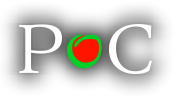|
|
| Poster, Friday, 19:00 |
|
|
|
| The Automated Microfluidic
Optical Stretcher
Roland Stange, Tobias Kießling,
Anatol Fritsch, Josef A. Käs
University of Leipzig, Faculty of
Physics and Earth Sciences, Institute of Experimental Physics I, Soft Matter
Physics Division, Linnéstraße 5, 04103 Leipzig, Germany |
|
|
| Contact:
| Website |
|
|
The complexity of the cell´s single parts and it´s physical
and chemical interactions are only partly understood jet, thus analyzing
the mechanical structure of living eukaryotic cells has emerged to an important
part of Biophysics. Therefore a series of methods have been developed over
the last decade investigating the single cell response to an applied force.
Most popular techniques are atomic-force-microscopy, micro-pipette-aspiration,
magnetic-twisting and optical-stretching. To achieve convenient results
a huge amount of single cells needs to be measured to compensate the large
scattering of biological samples.
As the Optical Stretcher is operating with suspended cells in microfluidic
channels it already fulfills the basic requirements for an automated measurement,
which is necessary to acquire large amounts of data leading to statistical
relevant results. To control the required peripheral hardware for an automated
setup we created a LabView program that measures single cells with the
Optical Stretcher sequentially in an independent way. A custom-made Matlab
software is performing an edge-detection on the images of the stretched
cells, also fully autonomous. With the automated measurement and the autonomous
edge-detection the Optical Stretcher is capable to acquire unbiased statistical
relevant data, which leads to an improved insight view on cellular behavior
arising from optical induced stress. |
|

